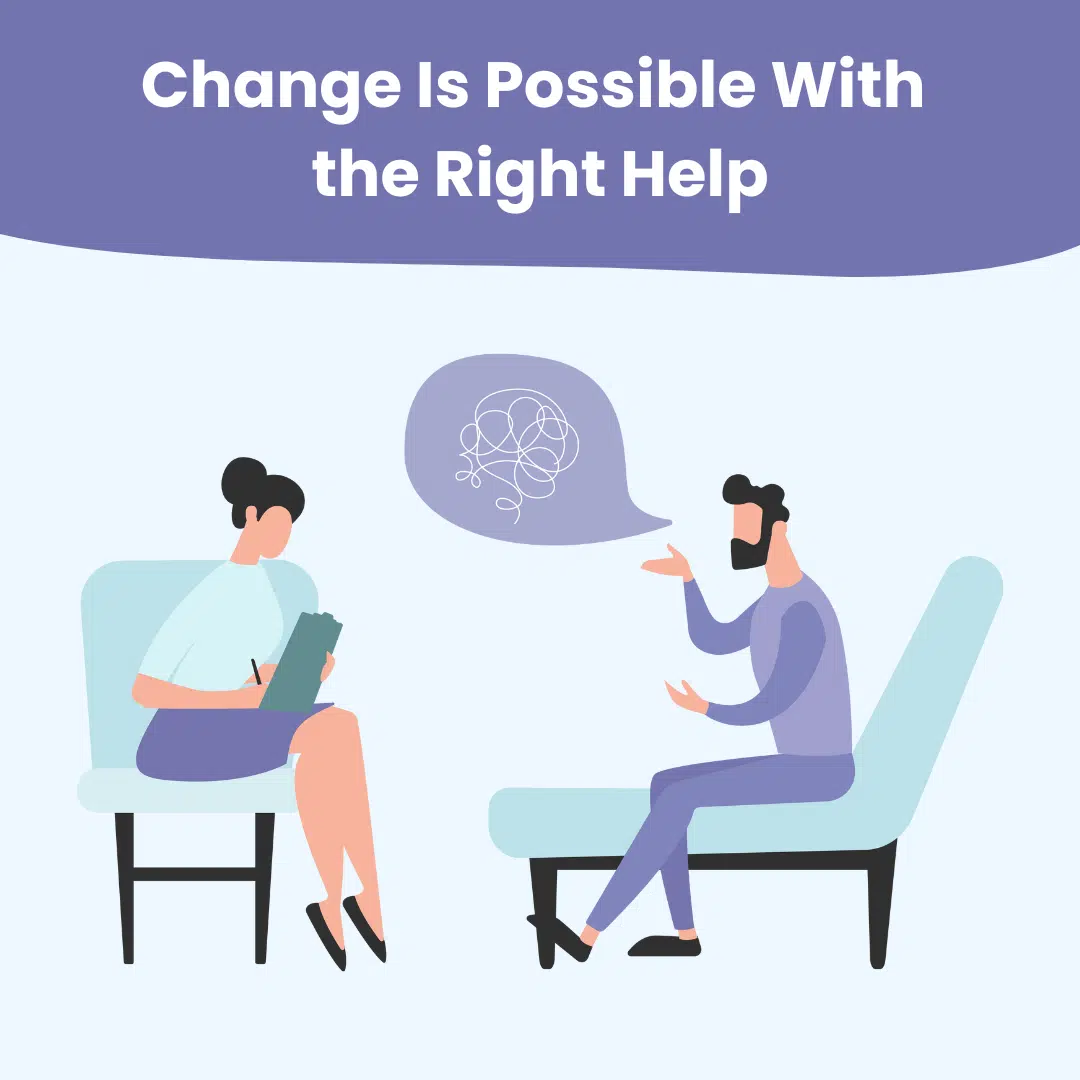

Singapore is a country where the pace of life never seems to slow down. Finding a moment of peace or rest can, therefore, feel impossible.
In fact, a 2023 study conducted in Singapore showed that around 14.1% of Singaporean adults had depression, and 15.2% had symptoms of anxiety.
These statistics show that it’s more important than ever to find a professional space, such as counselling in Singapore.
This article is a detailed guide to the counselling process in Singapore. We take you through various aspects, including what happens in a counselling session, different types of counselling services in Singapore, common counselling tools and techniques, and how to prepare for your first counselling session.
Individual counselling refers to one-on-one counselling sessions between an individual and a mental health counsellor.
At Talk Your Heart Out (TYHO), we offer individual counselling in Singapore through online or in-person sessions.
Counsellors can help with several issues, such as depression, anxiety disorders, eating disorders, low self-esteem, life transitions, and personal growth.
During couples counselling in Singapore, you and your partner can gain a better understanding and empathy towards each other. You can learn relationship skills, such as setting boundaries and expressing your needs clearly.
TYHO couples counsellors specialise in issues such as lack of trust, communication gaps, frequent conflicts, and intimacy issues. We offer couples counselling through online and in-person sessions.
Marriage counselling involves counselling sessions between a married couple and a professional counsellor.
Through marriage counselling in Singapore, you may explore topics like:
Marriage counselling lets you work with your spouse and counsellor towards a happy and healthy marriage.
During family counselling in Singapore, you can attend counselling sessions with your family members.
TYHO family counselling services in Singapore are available online and in person. Through family counselling, you can explore issues such as:
Child counselling at TYHO is designed with your child in mind. Our approach is gentle and focuses on creating a safe environment where kids can express their feelings.
During counselling in Singapore, children can learn to cope with issues such as bullying, learning difficulties, anxiety, and mood swings. Experts at TYHO use age-appropriate tools such as motivational interviewing (MI).
Children may engage in one-on-one conversations with our counsellors. Child counsellors may occasionally invite parents or guardians to join the sessions.

Just as no two people can be the same, no two counselling journeys can follow the same path. This is why there’s no single answer to the question, ‘How long is counselling in Singapore?’
Some people may achieve progress as early as a few months, while others may need long-term support to work through deep issues or concerns.
Having said that, the exact duration that’ll work for you may depend on several factors, such as:
You may be stuck with the ‘short-term vs long-term counselling’ dilemma. In the sections below, we explore different types of counselling classified based on duration:
Short-term counselling typically ranges from 5 to 20 sessions and is ideal for those looking to address specific issues, such as life changes and workplace challenges.
It follows a pre-structured and solution-oriented approach, providing clients with immediate strategies and actionable solutions.
Below are some commonly practised types of short-term counselling in Singapore:
Long-term counselling is usually spread across several months or years. It involves more profound psychological work and ongoing emotional support, helping people work on persistent patterns, unresolved trauma and long-standing mental health challenges.
Long-term counselling is ideal for self-exploration, personal growth and addressing chronic mental health conditions.
Some common types of long-term counselling in Singapore are listed below:
So, what happens during counselling in Singapore? Questions people often have include what to expect in counselling, what types of questions the counsellor will ask, and whether sessions are confidential.
Before your first counselling session, you may be asked to complete an intake form (physically or online). It may ask for:
At the start of your first counselling session, your counsellor will explain how counselling works, including the limits of confidentiality. Some areas that may be covered include:
Here are some ways to prepare for your first counselling session in Singapore:
Be honest with yourself and your counsellor. Keeping an open mind invites new ideas, possibilities and experiences.
Some people find it helpful to jot down notes, ideas or doubts during or after the first counselling session.
If you’re opting for online counselling in Singapore, choose a private space where you won't be interrupted or overheard by others.
Eg: Your bedroom or a study room, with the door locked if necessary.
Next, prepare any items you might need, such as:
We recommend using a laptop rather than a mobile phone or tablet for online counselling in Singapore.
With a laptop, the call is more likely to continue smoothly, as the connection is usually stable, and the battery is likely to last longer.
Switching between various tasks during your online counselling session is not only disruptive, but it can also be tiring and disorienting.
Here are some steps to help you avoid distractions during online counselling in Singapore:
Rest assured, during in-person counselling in Singapore, your counsellor will ensure that the therapy room has as few distractions as possible.
Writing down your therapy goals before your first counselling session can help your counsellor build a personalised therapeutic plan.
Here’s a quick guide:
However, don’t worry too much if you can’t make a list. Counselling in Singapore is an ongoing and exploratory process!

During counselling in Singapore, counsellors may use various counselling tools and techniques. When used effectively, these can:
In the sections below, we discuss some common counselling support techniques and therapy tools used in counselling.
Your counsellor may use the following techniques in therapy to help with a range of issues, such as generalised anxiety, post-traumatic stress, and depression:
The empty chair technique used in Gestalt therapy can help you confront and resolve any ‘unfinished business’, such as:
This technique can help you:
Good communication involves these four facets:
During counselling in Singapore, you can develop skills to:
Grounding is one of the most common counselling support techniques used during counselling in Singapore. It helps clients:
Grounding techniques involve aspects such as:
While counselling provides a safe space to talk, its true power lies in equipping you with long-term skills that ensure you thrive mentally and emotionally.
Below are five crucial therapy tools used in counselling that you may learn during counselling in Singapore:
Emotional regulation is the skill of observing, identifying, understanding, processing, and managing your emotions effectively.
Here’s how counselling in Singapore may help you build the skill of emotional regulation:
Imagine you’re having dinner with your family. Your mother wants you to go on a date with her friend’s son. You really want to say no, but you hesitate, worried about hurting your mother’s feelings.
Saying yes in this situation may lead to an unwanted and awkward date and a strained relationship with your mother. Situations like these are common in everyone’s life, be it at work, at home or elsewhere.
Through counselling in Singapore, you can develop valuable interpersonal skills such as the following:
Cognitive reframing is one of the therapy tools used during counselling in Singapore. Here’s a quick step-by-step breakdown of how cognitive reframing works:
Problem-solving skills help you approach challenges with a structured and proactive mindset instead of feeling overwhelmed or stuck in the situation.
Below are the two key steps involved in this technique:
Mindfulness is the practice of being fully present in the current moment without any judgment. It helps you cultivate self-awareness, manage stress, and improve emotional well-being.
During counselling in Singapore, you will learn different mindfulness-based tools, such as:


If you are in crisis, or another person may be in danger, do not use this site. Please refer to these resources instead.

Mon - Fri (excluding public holidays)
9.30 AM - 6 PM (+08:00 GMT)
OUE Downtown 2, 6 Shenton Way, #12-11B, Singapore 068809
© 2025 Talk Your Heart Out Pte Ltd
Need Help? Chat with us
